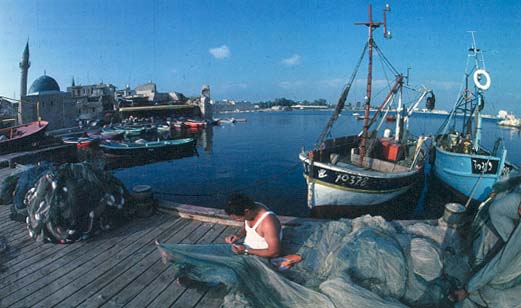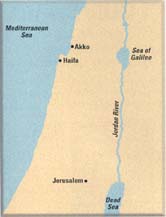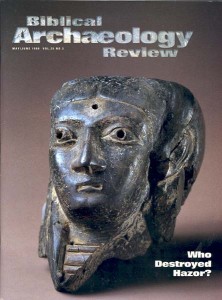Akko, Israel

When the urge to go overseas becomes unbearable but the family budget is at its usual low, we pick up and go to Akko. It’s the easiest, cheapest and most effective way I know to go to Greece without leaving Israel. As I sit in the fishermen’s harbor and watch the fishermen mending their nets (above), dine on fresh fish at Abu Christo, and stroll along the seawall of the Old City, I sense that in all Israel, no other site is so much a part of the Mediterranean world as Akko.
And yet the city is still very much a part of modern Israel; two thirds of its 45,000 inhabitants are Jewish. The other third, including the whole population inside the Old City—which juts south into the sea—is Arab.

Once visited by the likes of St. Francis of Assisi, Marco Polo and thousands of pilgrims to Jerusalem, the harbor of Akko (opposite, center) was the last major outpost of the Crusaders in the Holy Land. The cavernous Crusader remains—now underground—are what attract most visitors today. But before entering the Crusader city, I enjoy visiting the great mosque (opposite, top) of Ahmed Pasha, the 18th-century Ottoman governor of Akko, whose violent ways earned him the nickname of el-Jazzar, “the Butcher.” With its sharply pointed minaret, arcaded courtyard and numerous domes, the Akko mosque is the most Turkish-looking building in Israel.
Already a library member? Log in here.
Institution user? Log in with your IP address.

